Mastering 2 Digit Multiplication: A Comprehensive Guide
Introduction
2 – Digit Multiplication
Mastering the art of 2 digit multiplication is a crucial skill that lays the groundwork for advanced mathematical proficiency. Let’s delve into the realm of 2 digit multiplication and explore its significance in the world of mathematics and everyday life.
Analogy of Definition
The Process of 2 Digit Multiplication
2 digit multiplication involves the process of multiplying two numbers, each with two digits, to obtain a four-digit product. Multiplication is a fundamental operation that is utilized in various mathematical calculations and problem-solving scenarios.
Method
Step-by-Step Guide to Multiplying Two-Digit Numbers
Understanding the Terms
Multiplicand: The number that is being multiplied. It is the top number in vertical multiplication.
Multiplier: The number you are multiplying by. It is the bottom number in vertical multiplication.
Step 1: Write the Numbers in Vertical Form
Start by writing the multiplicand (top number) and the multiplier (bottom number) one below the other, aligning them by place value (tens under tens and ones under ones).
Example: Multiply 34 (multiplicand) by 56 (multiplier)
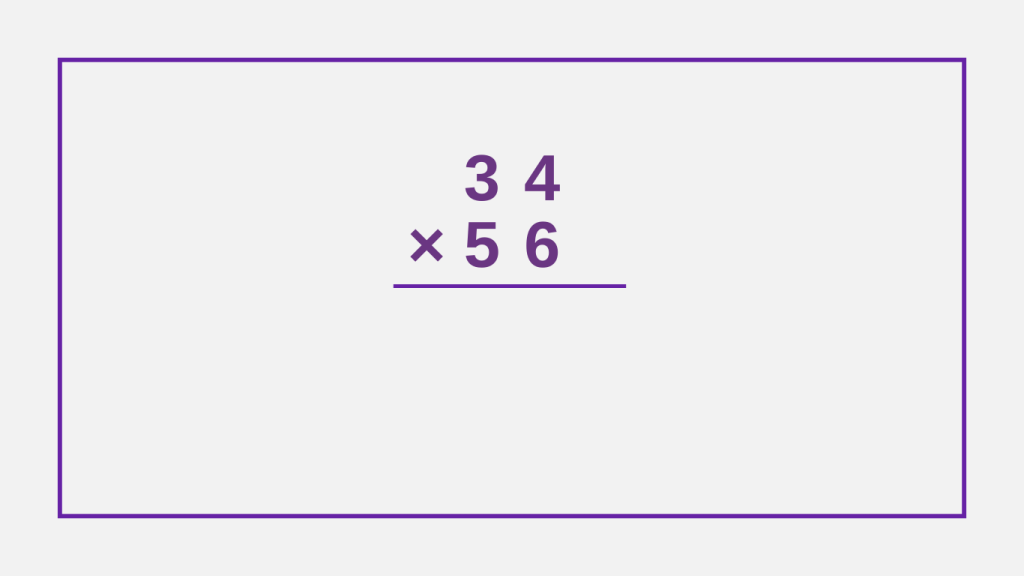
Step 2: Multiply the Ones Digit of the Multiplier by the Multiplicand
Multiply the ones digit of the multiplier by the entire multiplicand. Write the result directly below the line. If the product is 10 or more, remember to carry over the extra digit to the next place value.
Example: Multipkying 34 by 6 gives us 204.
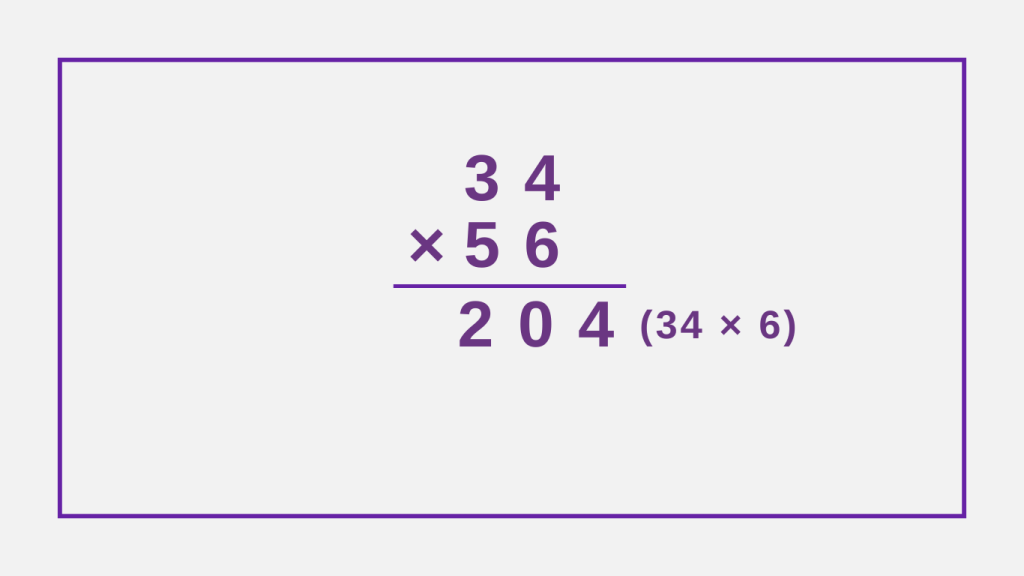
Step 3: Multiply the Tens Digit of the Multiplier by the Multiplicand
Next, multiply the tens digit of the multiplier by the multiplicand. Since this digit represents a multiple of 10 (e.g., 50 instead of 5), add a zero to the right of the product to correctly shift it to the tens place. Write this result directly below the first product.
Example: Multiplying 34 by 50 equals 1700.
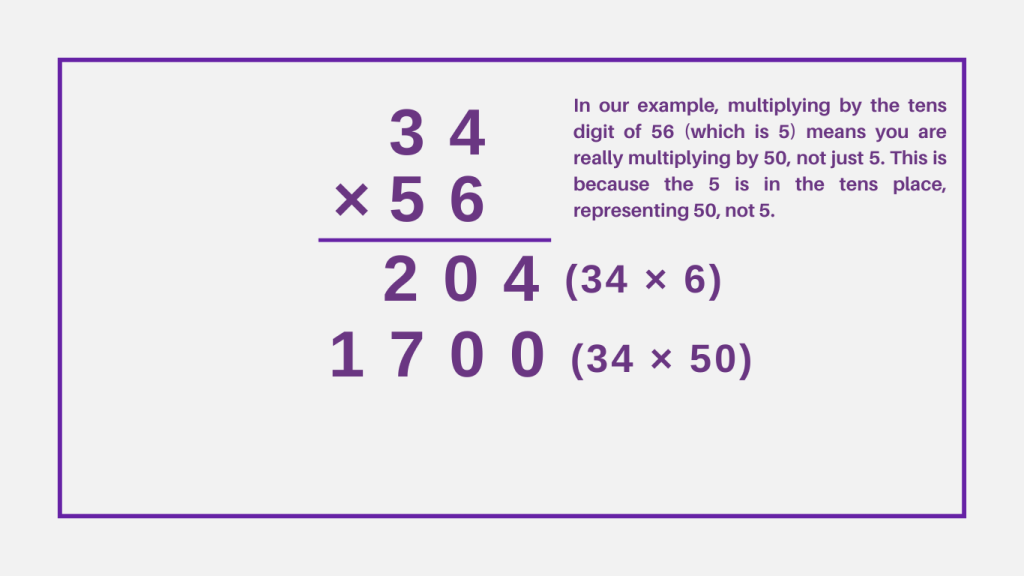
Step 4: Add the Products
Add the two products you calculated to get the final answer.
Example: Hency, adding the products, we get 34 multiplied by 56 equals 1,904.
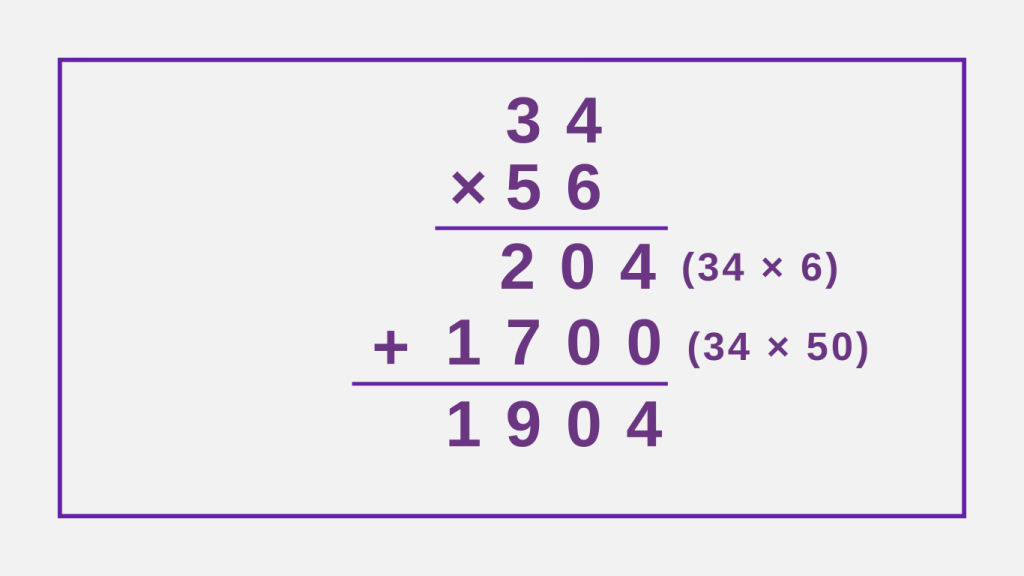
Examples
Example 1: 23 × 45
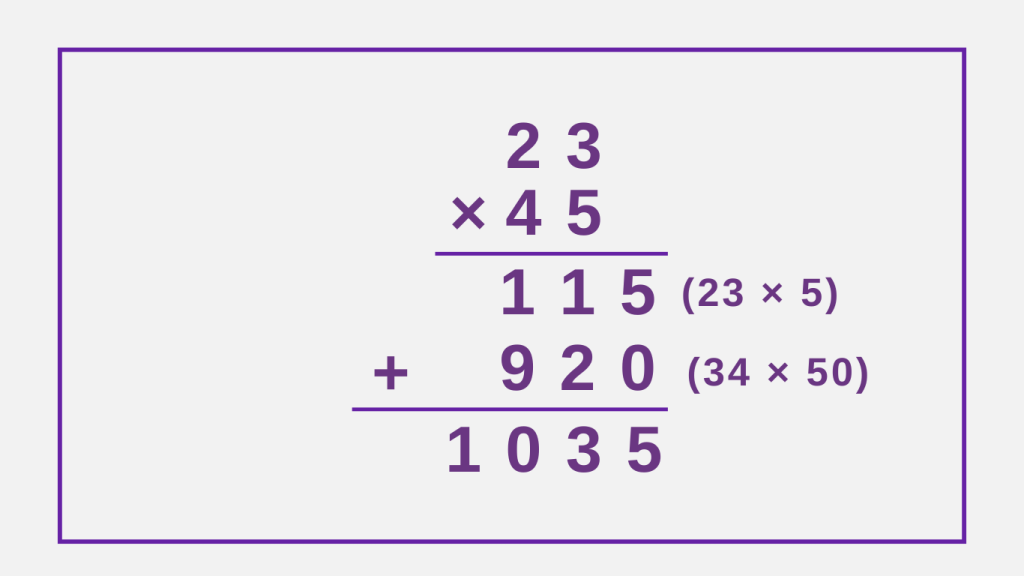
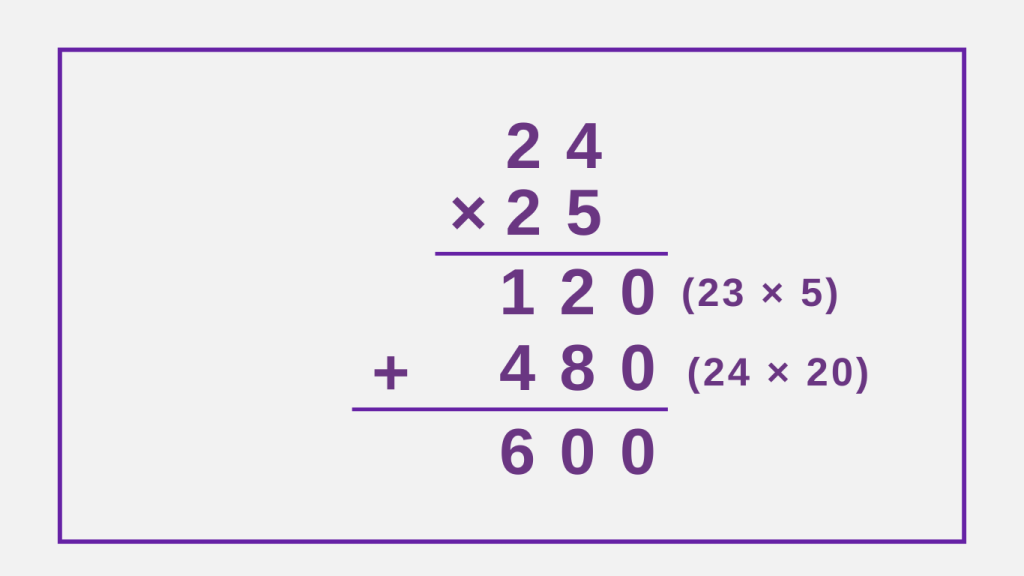
Quiz
Tips and Tricks
1. Break It Down (Distributive Property)
Tip: Split one of the numbers into tens and ones, and then multiply each part separately before adding the results.
Example: Multiply 23 by 45. Break down 23 as 20 + 3. Multiply: 20 × 45 = 900, and 3 × 45 = 135. Add: 900 + 135 = 1,035.
2. Use Rounding
Tip: Round one number to the nearest ten, multiply, then adjust.
Example: Multiply 47 by 26. Round 47 to 50, then multiply: 50 × 26 = 1,300. Subtract the difference: 3 × 26 = 78, so 1,300 – 78 = 1,222.
3. Multiply by Parts (Lattice Method)
Tip: Draw a grid, write the digits of each number along the top and side, multiply each digit pair, and add diagonally. Lattice method visually breaks down the multiplication and makes it easier to handle large numbers.
4. Use Patterns
Tip: Recognize patterns like squaring numbers (e.g., 25² = 625) or multiplying by 11.
Example: For numbers near 50, use (a + b)(a – b) = a² – b². Multiply 51 by 49. Use 50² – 1² = 2,500 – 1 = 2,499.
5. Estimate First
Tip: Before doing the exact multiplication, estimate the result by rounding and multiplying. This gives a rough idea and helps you check if your final answer is reasonable.
6. Practice Mental Math
Tip: Regular practice with smaller numbers or mental exercises will improve your ability to handle two-digit multiplication quickly and accurately.
Real life application
Scenario: Grocery Shopping
When calculating the total cost of multiple items at the grocery store, 2 digit multiplication comes into play. For instance, determining the total cost of 25 items priced at $36 each requires the application of 2 digit multiplication to obtain the final amount.
Scenario: Area Calculation
In the context of real estate or construction, 2 digit multiplication is utilized to calculate the area of rectangular spaces. For example, determining the total area of a room measuring 37 feet by 48 feet involves multiplying the length and width using 2 digit multiplication.
Scenario: Time and Distance Problems
When solving problems related to time and distance, such as calculating the total distance traveled in a given time period, 2 digit multiplication is employed to obtain accurate results.
FAQ's
Like? Share it with your friends






